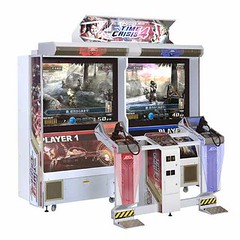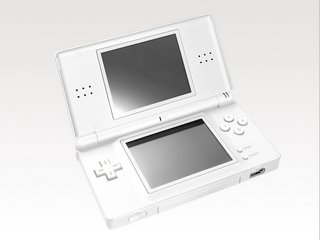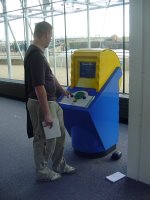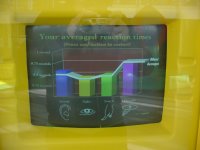Brief Three - U.C.I.
'Analyse an Arcade Machine.'
Having visited the UCI down Cardiff Bay, I have decided to write about an arcade machine I found there called 'Time Crisis 4.' Unfortunately when I went to the UCI there was not many visitors, so I ended up spending all my money to ensure I understood the HCI/Usability of the machine.
Observations & Interpretations
Time Crisis 4 is an interactive, one to two-player cooperative gun game. Specifically it is a first person Rail Shooter and is presented in a upright, twin cabinet (two screens). Players have the option to select either dual-player cooperative game play or dual single play in the same cabinet. I make this point because this use of multi-screens is highly innovative and original in an arcade machine.
As for the game itself, players are navigated through three stages & each stage consists of a prologue and three areas. The user is provided with a plastic light gun to interact with what is happening on the screen & has an in-game arsenal which includes a standard handgun, machine gun, shot gun and grenade. Players change weapons in the game by pulling the trigger while they hide (you hide by taking your feet off the foot pedal).
Forms of interaction
The main form of interaction the user has with this device is by shooting the enemies as they appear on the screen. The user is navigated automatically from scene to scene by the game. To assist players, they are guided through the three stages with the support of Voice Navigation, which comes from a speaker mounted on both players gun racks. The Voice Navigation provides players with instructions on selecting the appropriate weapons and timing their next move.
There is a also a foot pedal which players use to hide behind boxes and walls when the action becomes too intense. Players are also required to reload their weapons, like a real gun. This is achieved by aiming off screen and pulling the trigger button. In additional, players have the option to adjust the gun sight and select the blowback to on or off.
One other form of interaction Time Crisis 4 offers is the ability for players to control their fate, by offering multiple scenarios. Players are able to choose the direction they proceed at various points in the game; they can choose either right or left by pointing the gun at arrows located on the sides of the screen.
Is the interface design metaphorical?
The interface of this device is indeed metaphorical. The user is presented with a plastic imitation light gun and is placed in realistic gun fights, where they have to shoot and reload weapons and kill enemies in order to progress. The enemies are not passive and they fire back at the player, symbolised by red flashing holes when hit.
How do the exhibits in the UCI differ from those in Techniquest?
The exhibits in the UCI are all entertainment based, while the devices in Techniquest have an emphasis on education. The arcade machines in the UCI are intended to make money, so it is reasonable to assume they are aimed at young people with disposable income. These machines earn money every play, so the longer they keep the user entertained, the more money they make. This differs from Techniquest, where you pay upon entering to use all the machines as many times as you like.
Please click link for additional photos http://www.flickr.com/photos/64946738@N00/sets/72157594333222322/show/








